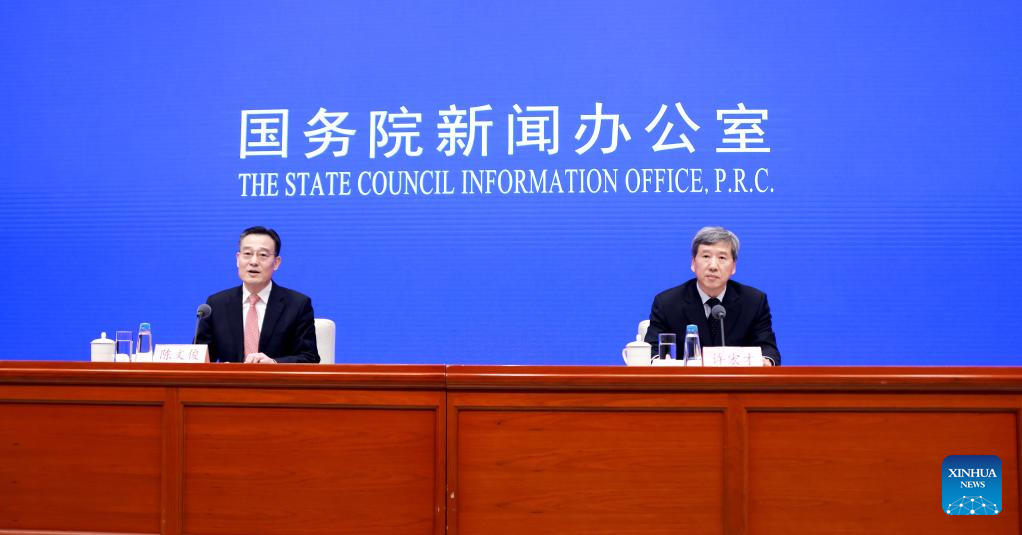
Xu Hongcai (R), vice minister of finance, attends a press conference held by the State Council Information Office on China's fiscal revenue and spending in 2021, in Beijing, capital of China, Jan. 25, 2022. (Xinhua/Pan Xu)
BEIJING, Jan. 25 (Xinhua) -- China's fiscal revenue rose 10.7 percent year on year to hit 20.25 trillion yuan (about 3.19 trillion U.S. dollars) in 2021, Xu Hongcai, vice minister of finance, said Tuesday.
The fiscal revenue in 2021 nearly doubled from the 2012 figure of 11.73 trillion yuan, Xu said at a press conference.
The central government collected about 9.15 trillion yuan in revenue, up 10.5 percent year on year, while local governments saw revenue up 10.9 percent to 11.1 trillion yuan.
"The recovery of economic growth and higher producer prices helped drive up fiscal revenues of central and local governments," Xu said.
China's GDP expanded 8.1 percent year on year in 2021, surpassing the government's target.
"The steady growth of GDP has laid a sound foundation for the growth of the country's fiscal revenue," Xu said.
Buoyed by rising commodity prices, upstream enterprises reported significant revenue and profit increases last year, driving the growth of fiscal revenue, he said.
In the first 11 months of last year, the total profits of major industrial enterprises surged 38 percent from a year earlier.
However, the fiscal revenue growth averaged 3.1 percent over the past two years, lower than the country's average GDP growth of 5.1 percent for the two-year period. The share of fiscal revenue in GDP kept falling during the period, which indicated fiscal support for economic and social development remained under relatively high pressure, Xu warned.
The country's fiscal spending edged up 0.3 percent year on year to 24.63 trillion yuan in 2021.
TAX, FEE CUTS
China will take stronger measures to cut fees and taxes to support market entities this year with a combination of fiscal incentives, Xu said.
The measures will be more precise and sustainable to meet the needs of market entities, he said.
Incentives will be given to support the high-quality development of the manufacturing sector, such as tax deductions for research and development expenses of enterprises to aid technological advancement, Xu said.
The country will also extend the tax and fee cuts due at the end of 2021 for small, micro and individual businesses to further ease their operating pressure.
The central government will step up transfer payments to local governments to ensure sufficient funds for local tax and fee cuts, Xu said.
On the basis of 7.6 trillion yuan of tax and fee cuts over the 13th Five-Year Plan period (2016-2020), China cut another 1 trillion yuan in taxes and fees in 2021, which helped mitigate the impact of COVID-19 on market entities.
Xu said the country will set appropriate deficit and debt targets, guard against risks and enhance coordination between fiscal policies and monetary, employment, industrial, investment, consumption and regional policies.
China will continue implementing proactive fiscal policies and prudent monetary policies for steady economic progress in 2022, according to the annual Central Economic Work Conference held in December.
China will work to improve the effectiveness of its fiscal policies, enhance financial transfer payments, make good use of local government bonds, and strictly control government spending this year, Xu said. ■



